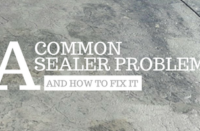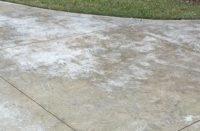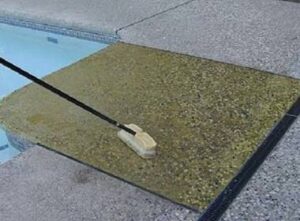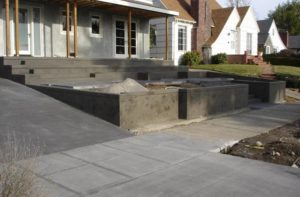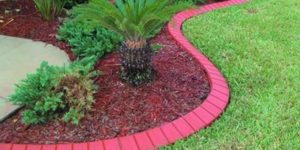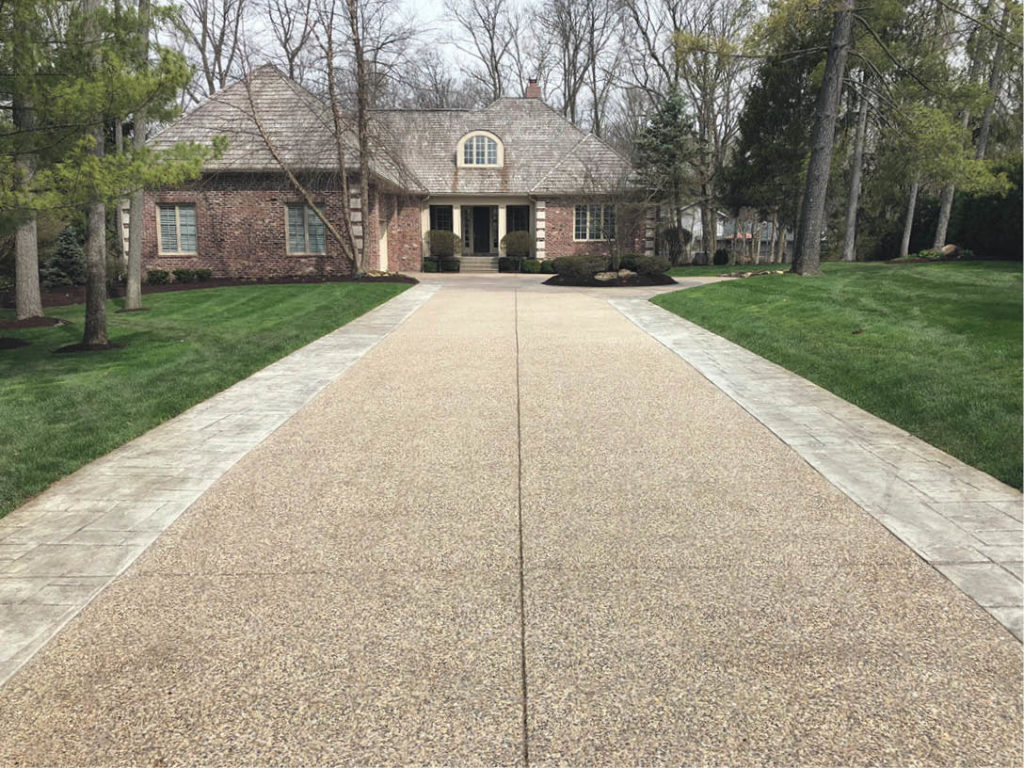
Exposed aggregate concrete is a decorative concrete look that will enhance the curb appeal of driveways, pool decks, sidewalks and patios. It’s achieved when the top layer of concrete has been removed to expose the rocks underneath.
A properly applied sealer will keep this finish in pristine condition so the concrete doesn’t crumble or blemish over time. You can apply sealers to new or existing surfaces and they aren’t just pleasant to the eye. They can extend the life of the concrete by protecting the surface from harsh winter freeze-thaw cycles and hot 90-degree summer days. Sealers also can block ultra-violet rays that cause fading and inhibit the growth of mold and mildew.
Pick and choose
When it comes to sealing exposed aggregate, there are two types of concrete sealers that are most common: penetrating and topical.
Penetrating sealers preserve the concrete without changing the look, allowing the exposed aggregate to retain its natural appearance and color. They seal the aggregate without leaving behind a visible surface film. On average they last from seven to 10 years and require little to no maintenance. Penetrating sealers won’t secure loose stones or prevent stones from coming loose. If you need to secure loose stones, an acrylic sealer is a better choice.
The second and most common choice is a topical acrylic concrete sealer which preserves the concrete and enhances it with a high-gloss finish often referred to as the “wet look.” Eight out of 10 of our customers choose a honey brown-tinted high-gloss sealer for their exposed aggregate surfaces. It provides a semi-transparent brown tint that helps to bring out the natural characteristics of the aggregate below.
The high-gloss coating is UV resistant and helps to reduce concrete dusting, staining, hot-tire pickup, mold, mildew and efflorescence. The brown tint allows for a uniform look that darkens the exposed surface.
Another benefit of using an acrylic sealer is that it’s topical. Instead of penetrating a 1/2 inch into the concrete, the sealer sits on top on the surface. It helps hold the aggregate pebbles in place, reduces pitting and extends the life of exposed aggregate concrete. Depending on weather and traffic, when using an acrylic sealer exposed aggregate concrete should be sealed every 12 to 36 months.

Clean and apply
Before applying either a penetrating or topical sealer, you must clean the exposed aggregate concrete. Pressure wash the dirt and grime off the surface, use rust remover to remove rust and a cleaner/degreaser to tackle tough oil spills. After cleaning the concrete, allow a day to dry.
Once the concrete is dry, begin the sealing process. Using a ½-inch roller and a pump-up sprayer, start applying the sealer. If the project is a driveway, start by the garage door entrance working toward the road making sure not to step in the sealer.
Apply sealer quickly to avoid any overlaps and roll marks. It’s best to work in smaller 4-by-4-foot sections. You should apply the sealer at the manufacturer’s recommended spread rate. This is typically between 100 and 150 square feet per gallon.
Let the sealer dry for one to four hours for foot traffic and 24 to 48 hours for car traffic. If the sealer didn’t dry evenly, then apply a second coat to even out the appearance.
Questions from Readers
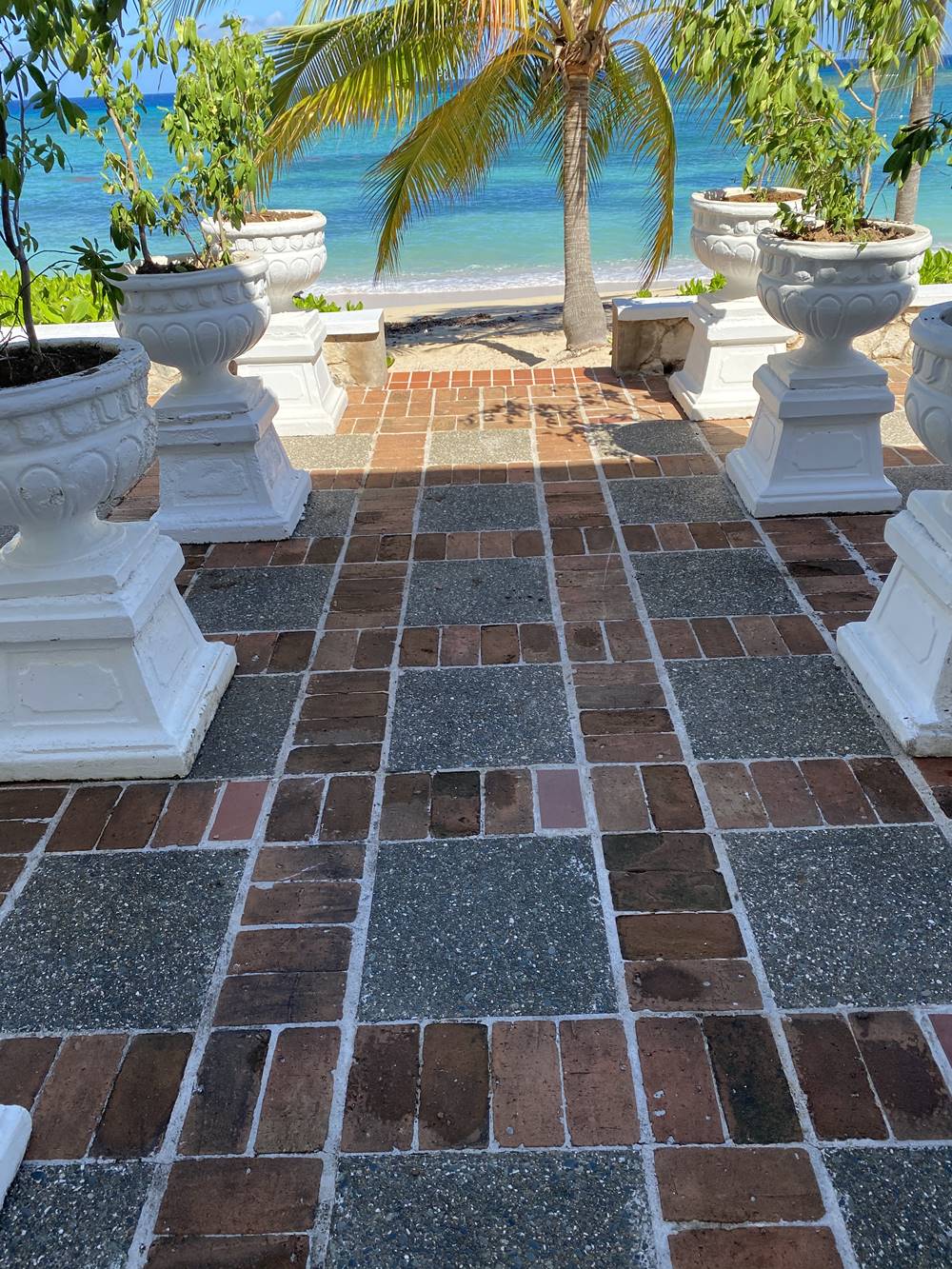 Question
Question
Can the aggregate be refreshed so that it still maintains a non-slip surface? What would you recommend?
Answer from Concrete Decor
Today’s VOC laws make concrete sealers a bit more challenging to work with, especially when recoating an existing surface. Do you have a record of what was previously used to seal this particular patio/walk?
If the previous sealer was an acrylic, it might be a good idea to use a stripper to remove the old sealer along with any mildew and dirt that may have accumulated.
We offer a product via the ConcreteDecorStore.com called Deco-Peel. It’s extremely easy to work with and containable. You simply cut squares of the supplied fabric, lay it on top of each concrete pad, and roller-apply the stripper.
Wait 15 to 20 minutes and pull up the fabric which has absorbed any sealer from the concrete surface. Then lightly pressure wash the concrete along with the rest of your patio and apply a new coat of sealer. (Allow the concrete to adequately dry before applying a new sealer.) Also, remember that a few thin coats of sealer is much better than one heavy coat.
There are two types of sealer: solvent and water-based products. And like the article suggests, a penetrating sealer is best for exposed aggregate concrete surfaces. Non-penetrating/topical sealers will coat the surface along with the aggregate, creating a slippery surface.
Regardless of which type of sealer you choose, I still recommend adding a slip-resistant additive to the sealer before applying.
Sealer Testing: Simply pouring some fresh water onto the concrete surface will tell you if any sealer is still holding onto the concrete. With that gorgeous ocean in the background. it’s possible that over time the previous coating has disintegrated. Water beading up on the surface will tell you that a sealer is still present.
Question
We had exposed aggregate laid recently. The contractor wants to seal it just seven days later. Since it was laid we have had cold daily temperatures and frost every night. I am concerned that sealing is too early. When should it be sealed?
Also, can I seal it first with penetrating sealer, then later with the more cosmetic topical sealer? If so, how long between the two.
Answer from Concrete Decor
Applying a sealer inside the 28-day window is not recommended. A ‘cure and seal’ is acceptable, however. With regard to applying sealer in cold climates, it is best to refer to the sealer manufacturer’s product guidelines in order to protect yourself and your concrete from any breach of a product warranty.
Regarding the use of a penetrating sealer first and a topical sealer second. It is doable, but you need to make sure, once again, that the product manufacturer guidelines approve this type of use. However, if ayou apply the sealer correctly, it will saturate the concrete surface and fill necessary voids and pores in the concrete surface. Apply material sparingly while a second person uses a RV type brush to randomly move the product around on the surface. There should be no build up of material during this method of application. Using this approach with two or three coats of sealer, again, applied sparingly, will deliver excellent results.

